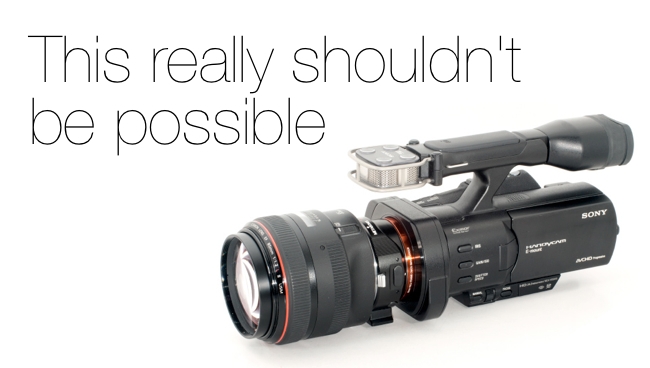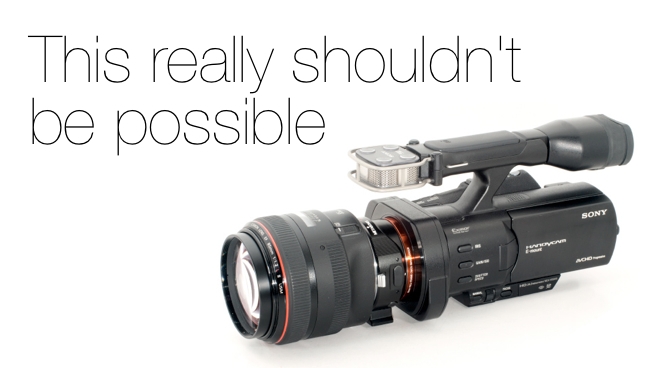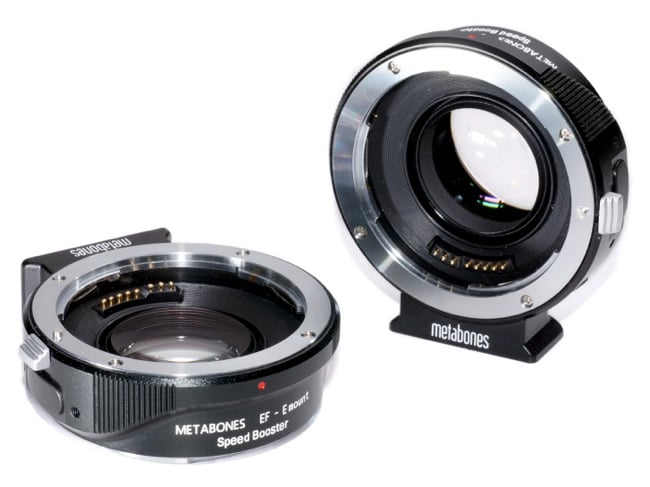
 Metabones speed booster
Metabones speed booster
The Metabones Speed Booster is a device that sounds impossible. But it isn't, and RedShark contributor Craig Marshall thinks it's a good investment
Anyone who has worked with either still or video lenses has heard of and maybe even bought a ‘Focal Extender’ or ‘Teleconverter’. These devices are typically fitted between the camera and the lens to extend your focal range. For example, I want to get up close to the subject with my 300mm telephoto so I fit a 2x Extender and voila, I’m looking through the equivalent of 600mm. Sounds great! Unfortunately, there’s a catch.
Good quality Extenders have traditionally been very expensive. They usually cost as much as your lens and consist of several optical elements in several groups so they typically halve the amount of light reaching the camera’s film plane or sensor. There’s another problem too, unless your Extender is ‘optically perfect’, it will simply amplify any imperfections in your current lens: distortion, chromatic aberration, etc. Focal extenders still have their place but what’s this mumbo jumbo about a Focal Reducer?
Case study
Before I answer that, let’s look at a typical case study. I use a popular Sony NEX videostills ‘hybrid’ camera with a large APS-C sensor and a ‘bayonet’ E-Mount lens system. A digital HD camera with a removable lens makes good sense, especially if you already have some SLR 35mm Full Frame lenses in your collection as lens to camera adapters are cheap and readily available. Over the years, I have acquired a selection of vintage Carl Zeiss Contax prime lenses. They’re big, they’re brass, they’re fast and most important to me they’re affordable. I also have a Zeiss Mutar II 2x Extender. When fitted to any Contax lens, it reduces light by only one stop but doubles the focal length without any noticeable optical distortion and yes, it was expensive.
To adapt my Full Frame SLR lenses with their C/Y mount to an APS-C camera with a NEX E-Mount, I can use an after-market adapter so for around $15, I can buy a simple mechanical device which will do the job. (Canon to NEX?, Nikon to NEX? Yes, these adapters are commonly available too) However, there is a trade-off. Adapting an FF lens to an APS-C format camera will result in approximately 1.5 times the FOV (field of view). Now, in my case if I fit the adapter plus the 300mm telephoto to my NEX E-Mount camera, suddenly I’m looking through the equivalent of 450mm. Nice. Add my 2x Extender and now I have 900mm. Even nicer! But what if I want to use a wide angle lens? I put on a 24mm FF lens and suddenly it’s only a 36mm. Not so nice. An 18mm wide angle reduces to a 24mm wide angle. What if there was an alternative? There is and it’s called a Focal Reducer.
Instead of using a ‘dumb’ adapter, you can use one with an optical element but unlike the Focal Extender we discussed earlier, this cunning device does not reduce the light by one stop but instead it INCREASES the light by one stop! What, is this more Work of the Devil? No. Focal reducers have long been coveted by opticians and astronomers but until recently, they have been both difficult to make and expensive to buy. In fact, the remarkable candle lit scenes in Stanley Kubrick’s “Barry Lyndon” (1975) employed NASA’s outrageously expensive 1960’s Carl Zeiss 50mm lens which featured an inbuilt focal reducer. After that film’s release, this optical dinosaur became known in the trade as the famous ‘Barry Lyndon Lens’. Its speed was and still is, a stunning F0.70!
Affordable Focal Reducers
Enter two clever boffins from up Canada way: lens designer Brain Caldwell and mechanical engineer, Wilfred Bittner. Caldwell boasts over 100 manufactured products under his ‘Caldwell Photographic Inc.’ mantle and Bittner founded ‘WB Design’ in 2006 to perform specialised photographic and mechanical design. Together, their current commission is to design twelve different high speed prime lenses for Panavision’s new 70mm digital cinematography camera. Nice work if you can get it but in their ‘spare time’ Caldwell and Bittner managed to patent an affordable optical reducer for both (MFT) Micro Four Thirds and APS-C cameras. This popular device is sold under the Metabones brand and is called the ‘Speed Booster’. Its patented optical design consists of four elements in four groups and boasts some very impressive specifications indeed. Now, here are six compelling reasons why you might want a ‘Focal Reducer’ after all!
Ultra high Speed
Get an extra stop!
For example, it will convert an F1.2 lens to F0.90!
Field of View is Increased
No crop factor for MFT and APS-C cameras
Your 24mm wide angle FF lens becomes a 24mm lens again
MTF is Increased
Chromatic aberrations are reduced
Physical length is Reduced:
The focal reducer is shorter than the ‘dumb’ adapter
Your overall lens/camera length is shortened
Telecentricity is improved
Moves the ‘exit pupil’ further from the image plane
Improves corner illumination and reduces sensor artifacts such as colour variations caused by pixel crosstalk
‘Filter Effect’ is Cured
Solves digital photography’s ‘dirty little secret’
Corrects the aberrations cause by the low-pass/infrared/sensor cover glass filter pack when using ‘film’ lenses on digital cameras
White paper
A technical white paper is available from the Metabones website which expands the previous points in excellent technical detail.
I recently purchased my own Metabones C/Y to NEX ‘Speed Booster’ to adapt my Contax/Yashica mount lenses to my E-Mount APS-C cameras. Because my vintage Zeiss primes are fully manual, I did not require the model with electrical connections for Auto Focus and Iris Confirmation so my focal reducer cost an ‘affordable’ $399 plus shipping from their Hong Kong despatch point. Now my little 50mm F1.7 becomes an F1.2, I can enjoy my classic full frame lenses with their original Field of View plus I get an additional stop of light and improved optical performance to boot. All in all, a win/win situation!

In Part 2 of this analysis, I’ll be taking the Metabones ‘Speed Booster’ on location into the Blue Mountains National Park where we’ll compare it with the ‘dumb’ adapter and examine its low light capabilities.
Find out how Craig made a modular HD camera rig for less than $3,000
Tags: Technology


Comments